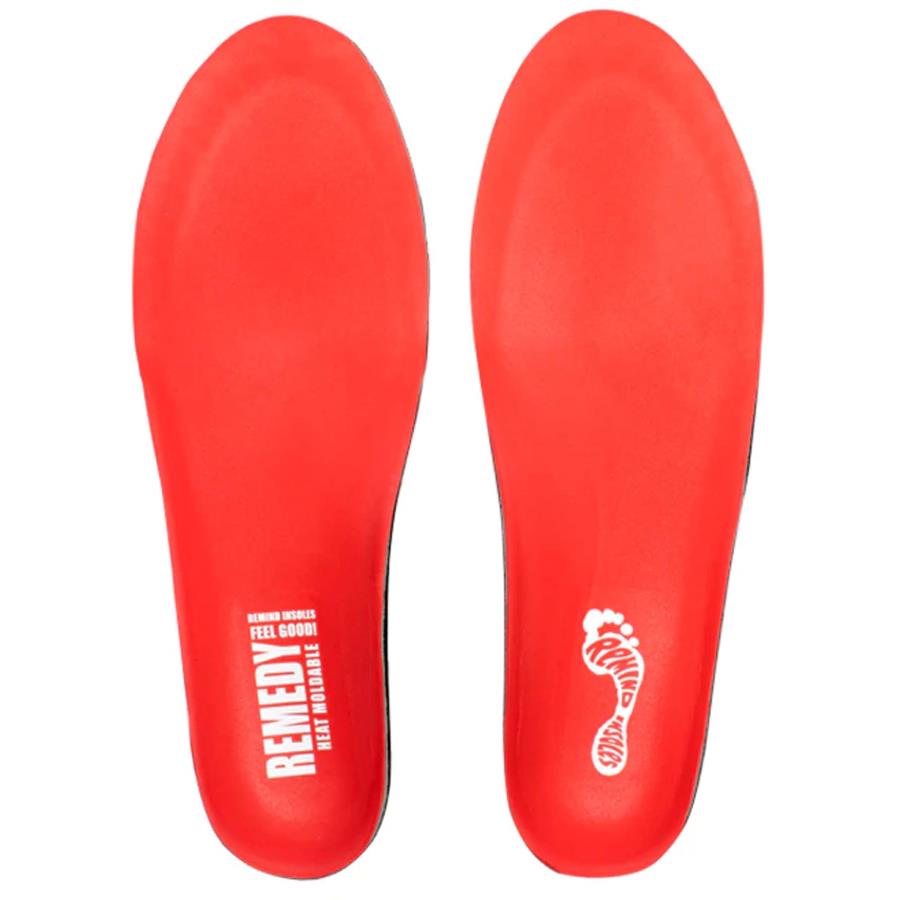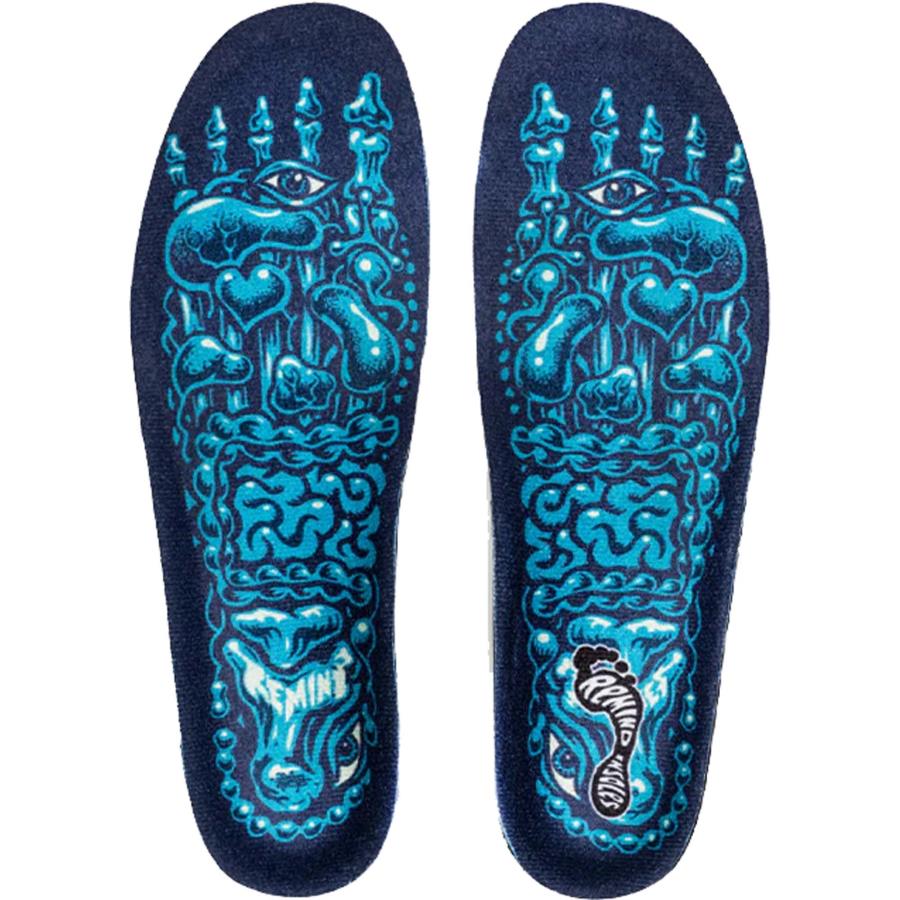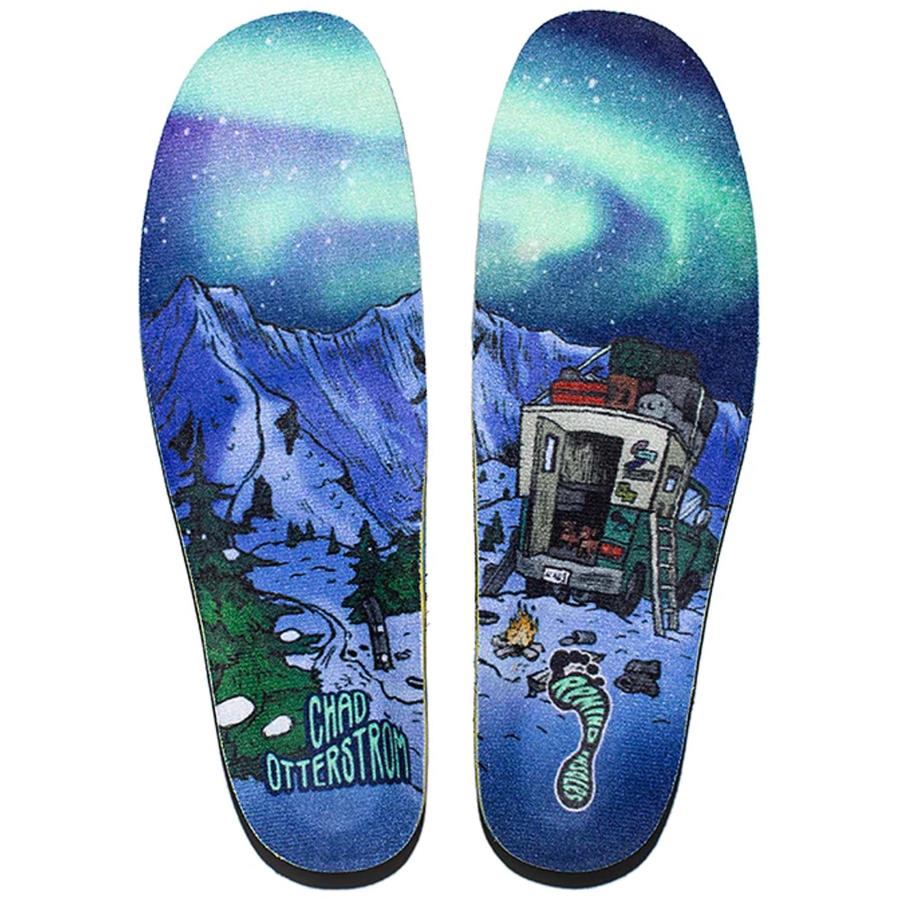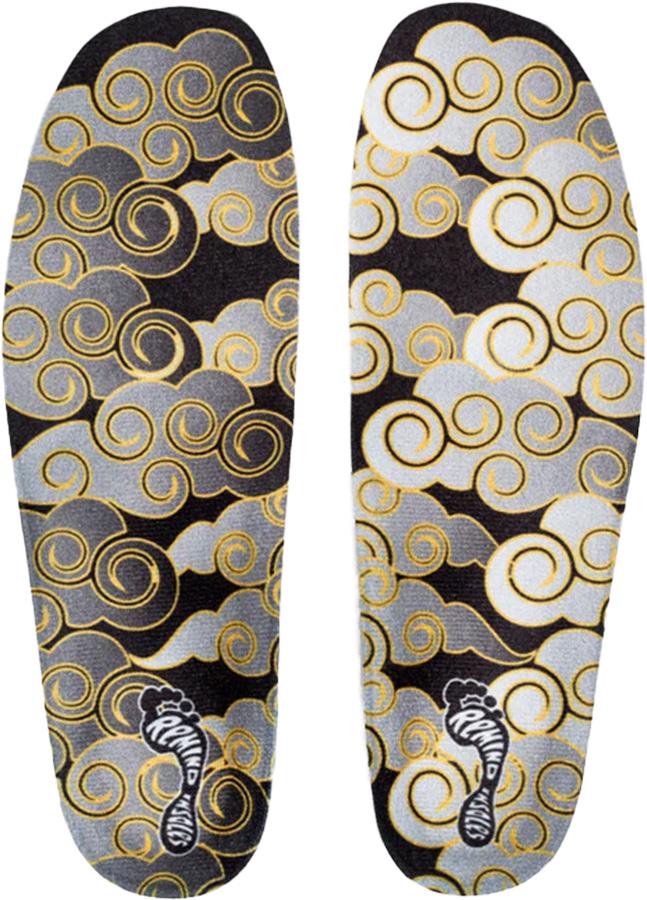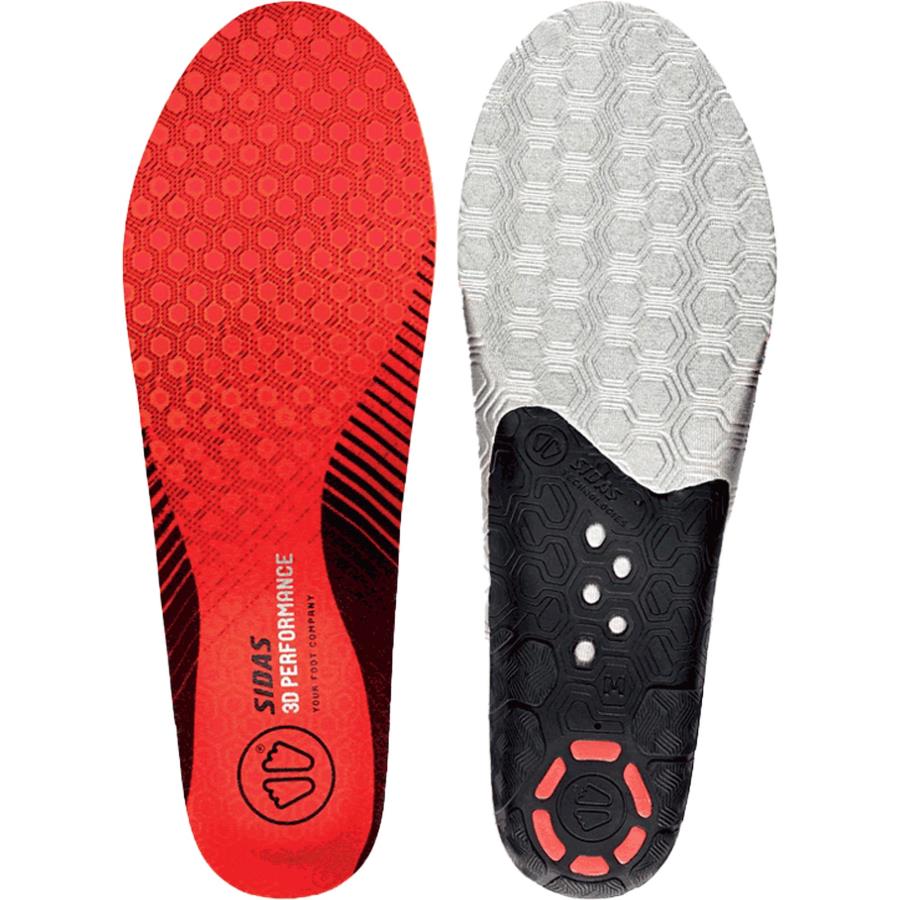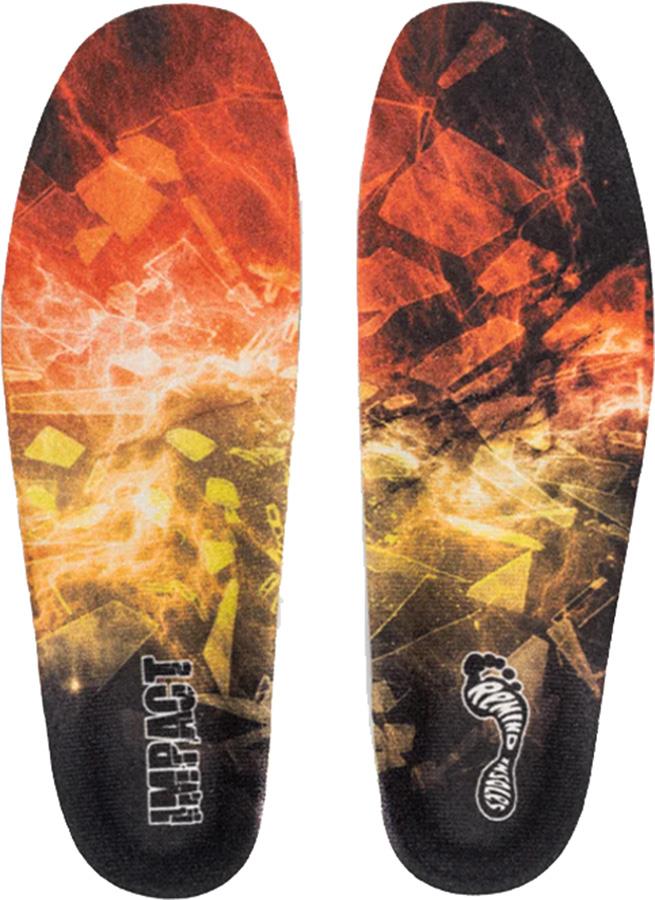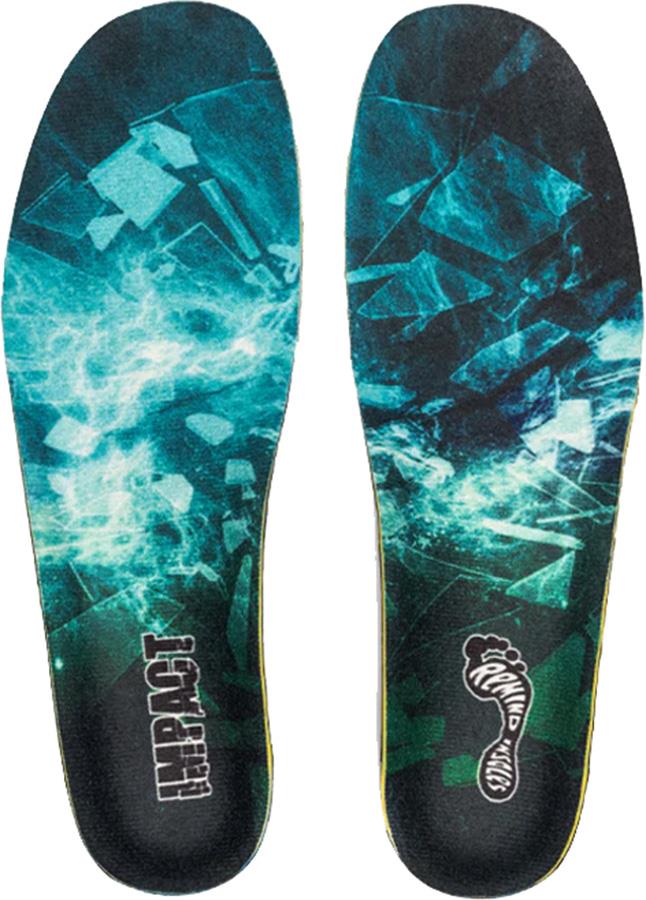THE ABSOLUTE GUIDE TO BUYING INSOLES

Modern hiking boots, off-road running shoes, and trainers/sneakers aim to give you as much support as possible, but the amount of impact stress absorbed through your feet, ankles, and upwards can cause all sorts of pains and problems. Simply by popping in some insoles tailored to the shape of your foot, and the way you move, you can take a huge step towards a way smoother ride.
Insoles have become a force in their own right in the after-market footwear category and offer a lot more than adding extra comfort. If stress isn't absorbed properly or the foot isn’t supported correctly, it can lead to problems ranging from knee pain to Plantar Fasciitis.
To give you a more detailed insight into what to look for when buying an insole online, we've put together this handy guide below.
Our feet go through a ton of micro and macro movements each day. We put undue stress on them by standing for hours without a break in between, play high-impact sports, wear poorly fitting shoes, or just continue wearing worn out footwear way longer than we should. After time, an issue can become so pronounced it's impossible to ignore.
The main culprit in us facing numerous biomechanics issues with our feet is due to the variety of terrain we navigate wearing shoes, thus causing havoc on our skeletal system. Insoles help mitigate these issues by providing shock absorption to help distribute pressure evenly along the length and breadth of foot and joints.
Insoles can also provide much-needed support and correction for over-pronation (feet collapsing inwards) and over-supination (feet collapsing outwards). Overall, the primary purpose of insoles is to make your shoes feel more comfortable to wear.

- A Better Fit: Shoe sizes can vary depending on what shoe you purchase. Particularly for hiking and running its difficult to find half sizes. Insoles can help feel the excess space resulting in a better fitting shoe preventing the chance of hot spots of blisters, and adding extra absorption on impact allowing you to run and hike further.
- Improve Posture: Custom made insoles will be the most effective but fixed insoles by brand such as Sidas or Supefeet (insert hyperlink) will also help support the foot into a correct more neutral position. Off the shelf insoles with a deep heel cup and good shock absorbing qualities can also work - (see here)
- Bunions: A bony bump that forms on the joint of your big toe (1st metatarsal) or little toe ( 5th metatarsal). Pronounced bulging can cause discomfort and foot stress. Either gel insoles or custom orthotic insoles would reduce the pressure as they will elevate and pull the foot back into the shoe/boot creating more space
- Over-pronation: When your foot rolls excessively inward when taking a step causing stress build up all over the foot. An insole with a deep heel cup and good arch support will keep foot aligned in a neutral stance. Sides 3D fixed or custom insoles is a great option for added support.
- Over-supination: Opposite to the condition described above. The foot rolls outwards causing shoes to wear away on the outside. I rigid insole will be useful here forcing the foot back into a neutral position, or again an insole with a deep heel cup and good arch shape. (link here)
- Plantar Fasciitis: Intense pain coming from the large muscle on the base of your foot between your heels and toe. Being on your feet all day, long-distance sporting activities e.g. hiking and running, and wearing heels all day can contribute to over-stretching this muscle. Insoles will reduce to pressure hot spots and will provide extra shock absorption to reduce the muscle inflaming.
- Pain under your feet: Worn outsoles, lack of arch support. An insole with gel/foam inserts will add extra comfort and shock absorption.
- Prevention again blisters: A better fitting shoe won’t run as much and cause irritation and discomfort
- Hammertoes: Having flat feet can be one of the causes of hammertoes. Insoles with decent arch support is a good idea, it will allow the toes to straighten out a bit relieving pressure on your toes. It’s important to identify the right arch height for your foot, an arch which is too high will cause pressure elsewhere.
The best way to determine the correct size of your insole is to take your best fitting pair of shoes and use that reference. If the insole comes up too long, you can easily trim it down to fit the shoe. Take the original insole out the shoe and place it on top of the upgraded insole and draw round it, then just simply trim the insole to the right size.
Non-custom insoles normally not only come in different lengths, but different heights for the arch support. Most of the Sidas insoles come in a low, medium and high arch shape and it's important to determine what is correct for you. If you purchase an insole which gives too little or too much support, it can cause irritation and the insole won’t perform correctly when either running or hiking. To better understand your arch height, dip your foot in water, step onto a piece of cardboard, then examine the print that remains. Use the handy guide below to try and identify your foot arch from the findings.
If the middle part of your arch is about half filled, this means you have a normal arch. Your arch naturally supports your bodyweight and pronates (rolls in) under a normal load.
The middle of the foot is almost completely filled, suggesting there is not much of an arch to your foot. Your foot probably rolls in (pronates) when you walk or run, which can cause muscle stress and joint problems. An insole will help stabilise the foot.
If you see very little of your footprint, you likely have high arches. This can cause more strain on joints as less of the foot is absorbing shock, which can cause problems in high impact/endurance sport. The cushioning / support from the insole will compensate for the lack of natural shock absorption.

Many people with flat feet don't experience any difficulties, but some suffer from pain in the heel or arch (plantar fasciitis), swelling along the inside of the ankles, along with knee and hip problems.
The best insoles for flat feet support your arch and stabilize your heel, preventing overpronation. Typically, the best insoles for flat feet will offer a low, but supportive arch. Finding one that matches the contours of your foot is key.
While soft, cushioned insoles might seem like the best choice, what your feet really need is structural support. All of Sidas and Super-feet footbeds/insoles we stock come with a variety of arch height support from low to high.
If your arch is neither high nor low, you have the most common arch type - medium or moderate. But just because you have the most prevalent arch height, it doesn't mean you don't need insoles that offer arch support.
Actually, your feet still require proper support to prevent overpronation, especially if you maintain an active life. Runners, walkers, and cyclists, in particular, need additional arch support.Like those with low and high arches, people with medium arch height should look for insoles that offer firm support that is contoured to their arch.
For people with high arches, it's especially important to find an insole that offers full support across the entire arch. That relieves excessive pressure on the ball and heel of the foot. The arch of the insole should mimic the arch of your foot. Insoles must fit well and be durable so they keep their shape during use and over time.
When you're selecting insoles for high or extra high arches, look for:
- A pronounced heel cup - insoles should cup your heel effectively, so for best results look for a deeper heel cup
- Rearfoot support - the rear third of the arch is the most important for pronation control, therefore it should be properly supported (this will do wonders for comfort!)
- Arch extension - the support should feel like a broad ramp, smooth and uniform all the way from the front to the back of the arch
- Firm and dynamic support - you should be able to press the arch down, but not easily
This type of insole is very technical and is used to control the movement of the foot below the ankle. This type is also used to prevent the foot from turning in excessive pronation. These are generally made from polyurethane plastic or ABS together with foam and microfibre for comfort. They can either be traditionally molded or 3D printed. Most often, custom insole makers/podiatrists offer this category of insole to you.
We offer a range of Sidas custom insoles that are specialized for either running or hiking.
Sidas custom outdoor hiking/walking insole can be specially heat-molded to your feet, guaranteeing tailored comfort and support whilst wearing your hiking boots, mountaineering boots and walking shoes. The Custom Outdoor has a high-density PE base under the ball of the foot - it is bend-resistant and gives you another sturdy layer within your boot to tackle tough terrains. Under the arch and heel, Sidas have utilized Podiaflex N and Transflux technology to provide reliable, tailored support and stability without restricting the natural movement of the foot.
Sidas custom running insole can be specially heat-molded to your feet, guaranteeing tailored comfort and support whilst wearing your running shoes. These insoles come with a 2.5mm Ionfoam top cover which has to cushion for extra comfort and antibacterial properties to keep any nasty smells at bay. The Custom Run features TX reinforcement underneath the arch and around the heel which, when molded, gives you a fit completely tailored to the shape of your foot, and provides the support and stability needed for running. The 2.2mm Jogtene pad under the ball of the foot helps to propel you forwards and reduce fatigue, while the Primtech/Confortene pad under the heel provides extra cushioning and works a shock absorber to minimise the effect of small impacts.
This type is somewhere in the middle of rigid and soft and is often made up of a combination of supportive materials like plastic, leather, cork, and foam. Mainly used by sportspeople. We offer a range of semi-rigid support insoles that can be trimmed down to perfectly fit into your footwear.
These tend to be the shock absorbers of the insole world. They help with balance; they ease pressure on sore points of the foot and are lightweight. These could be foam-based or contain gel. Find our full range of soft support insoles here
Explore Our Latest Insoles
Check out our full range of Insoles today!
Need further advice? We're here to help!
Visit our Help Centre to speak to our experts.

